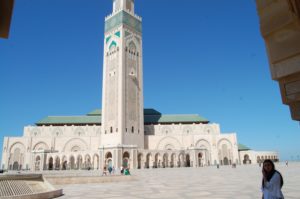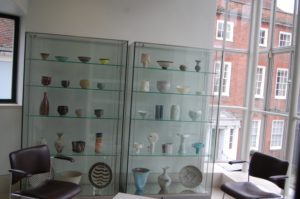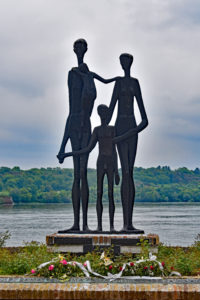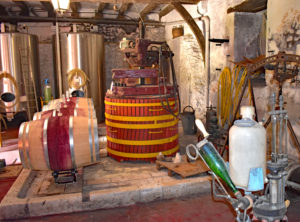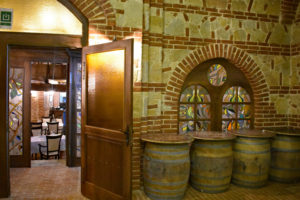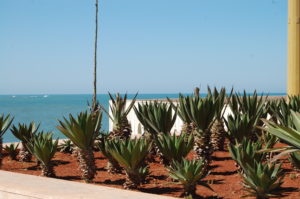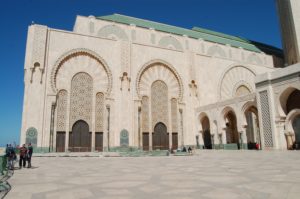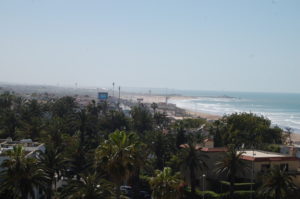After our first two nights in Marrakech, to which we would return at the end the week, we were met by Tawfiq, a courteous and skillful driver who would remain with us throughout, and the first journey began, to Casablanca.
As I explained to him, all we knew of the city was from the famous film. Needless to say it was greatly changed from those murky wartime images. After a drive on motorways that lasted all morning we reached the great port city. As everywhere such, the first experience was of blocked roads, in this case because a flyover to ease a junction was under construction. It was a far cry from the almost biblical scenes of shepherds with their flocks in open fields we had seen en route.
Lunch was at a busy restaurant, where double parking was in order, as long as the outer rank was of coaches, taxis or tourist vehicles. We had a grandstand view of police and drivers negotiating terms while waiting for a very good meal much like the three courses of mezze, tagine and dessert of the riad in Marrakech.
A short drive after lunch brought us to the docks, just to see how busy they were, then to the great new mosque of Hassan II. This is clearly a monument of pride to all Moroccans and fully justifies it. The only disappointment, not realised until after, was that on days other than Friday we could have entered. We had thought that restricted to Muslims, but no. Any visitor who wishes should ensure they arrive on another day.
We spent a long time on the outside because it is a splendid building, tiled in green in contrast to the white that is characteristic of Casablanca. It is interesting to remark how organic the buildings and therefore the cities of Morocco are. Whatever the structure of their walls, all are coated in the local clay. Marrakech is terracotta red, Fez and Rabat are buff. Casablanca, being a port and industrial, can make use imports but remains faithful to the china clay of its soil.
The mosque stands beside the Atlantic and will in time have a park on the landward side and along the coastline. It also has a museum and library nearby. There were hundreds, and had been thousands, of worshippers inside. It can accommodate 25000. After prayers many were inclined to wander about, looking as we did at the building.
Once our visit was over we travelled a short distance along the coast to our hotel. This was just across a junction from the branching coast roads. In the evening we chose one to follow in search of a restaurant. The one we found, Le Menara, offered a fusion of French and Spanish influenced seafood. We had a delicious seafood salad to start and a paella of seafood to follow, with a good Moroccan wine, and finished with an assiette of fruits, all very fresh and delicious. A bill of about £60 was better than many in the UK and the charming and informative waiter fully deserved his tip.
